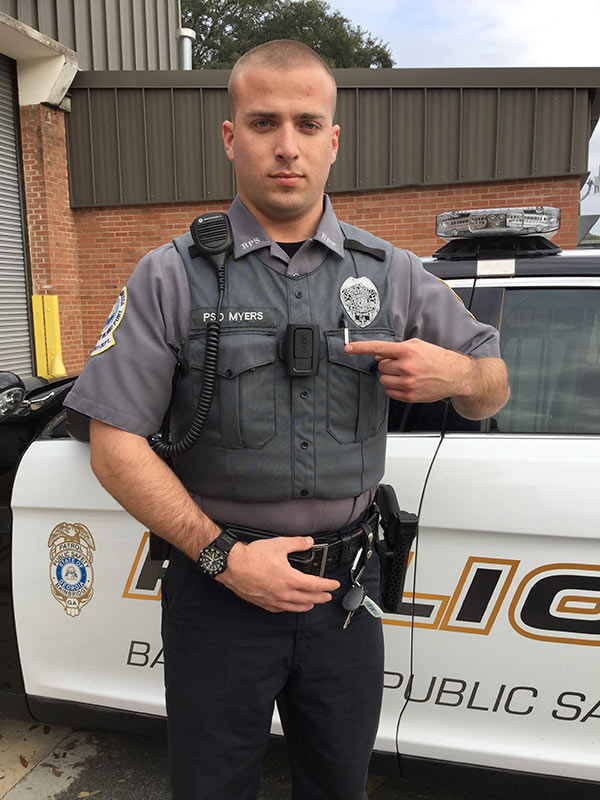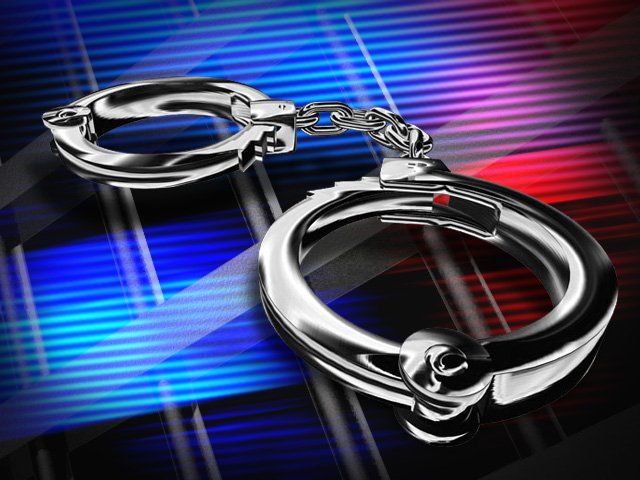

Bainbridge Public Safety Director Eric Miller said officer-worn body cameras have been considered locally for “some time,” but because of the economic downturn, it hasn’t been practical to purchase them: each camera costs $900 and there are currently 36 officers at Bainbridge Public Safety.
A vendor, RiskJockey, agreed to provide free body cameras to law enforcement officers in exchange for subscribing to their open-records release service. The website will facilitate the process of citizens making open records requests for incident and accident reports, photographs, videos (such as the ones captured by officers’ body cameras and patrol car cameras) and other evidence. RiskJockey will email the open records request to BPS and once the agency responds, the report or multimedia will be uploaded to RiskJockey’s website for the user to view.
Given the recent controversies involving police in Ferguson, Mo., and in New York City, I asked Miller if he believed that officers wearing body cameras would help with the public’s perception of law enforcement.
“I think it will,” Miller said. “The cameras in the cars don’t always capture everything, such as when an officer goes inside a building. Now that the body camera will also be recording what actually happens. It won’t be up to your interpretation or the officer’s–the actual evidence is recorded on film. As they say, a picture is worth a thousand words.”
Miller said having the cameras will hold both the officers and individuals in the public accountable.
“It gives us a clear, unbiased account of what took place when an officer showed up.”

The body cameras will also aid in officer safety and investigations of crimes, Miller said. He gave an example of an officer in the United States who was shot and because his injuries rendered him unconscious, he was unable to tell other officers about his assailant. A review of the officer’s body camera showed a picture of the shooter firing at the officer. At other times, an officer might be pursuing a suspect in a robbery or other crime and the body camera would record the suspect’s image, whereas previously, the officer could only use a verbal description when following up on the case.
Miller acknowledged that the body cameras could make officers more professional, as well.
“It holds the officer accountable just as much as citizens … What officers say, the manner in which they say it, and the actions they take will also be captured. It will also hold individuals accountable. If they say, ‘the officer pointed his weapon at me for no reason,’ then the camera will be able to pick that up. If the officer did it, and there’s no justification, then we hold the officer accountable. By the same token, if someone accuses an officer and it is untrue, we can hold the individual accountable for making false accusations of law enforcement.”
Miller said the cameras in officers’ patrol cars will continue to be used, saying there is still value in seeing what the officer sees as he responds to call, makes traffic stops, etc. Naturally, because of an officer’s personal privacy, the body camera isn’t always recording; Miller said exceptions include when an officer is taking a lunch break or visiting the restroom. However, at any time the officer exits his car to respond to a call, or has any reason to believe they might be interacting with a citizen, the officer is to turn on recording using a simple sliding door that uncovers the camera lens and automatically turns it on, according to Miller.
“If they see suspicious activity and get out of their car, they turn the camera on. Even if they’re just downtown checking businesses, saying hello, a store owner or a customer might talk about a concern and if the camera’s on, what they say is being recorded so the officer can pass it on to other officers.”
While the in-car system records to a hard drive in the car’s trunk, the body camera records to a memory card within the unit an officer wears on his chest. When the officer returns to BPS headquarters at the end of his shift, they have been trained to copy the contents of the memory card onto a BPS server where it will be archived. The videos are tagged with incident and case numbers to associate them with incident reports and other evidence.
Miller said it is mandatory policy for officers to both activate the body camera and copy video back to the BPS server at the end of each shift. He said officers would be in violation of department policy and held accountable if they failed to use the body cameras in situations they are supposed to.
“The biggest benefit [of the cameras] is that they help clear up a lot of questions about what an officer may be accused of doing or not doing.”



Be the first to comment